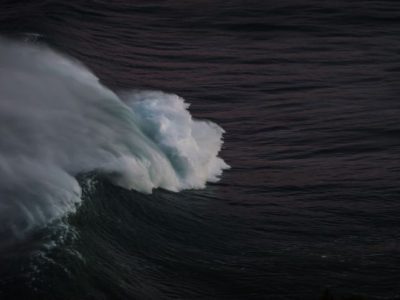Wave Energy Resource

The renewable energy debate has been heating up once again. States and Commonwealth governments have been trading initiatives over recent months in how best to secure supply of electricity to various markets. These problems are said to get worse as coal-fired power stations are retired and gas sources are directed to a large extent to overseas markets. Recently the South Australian Premier has come up with a plan using various energy sources, and the Prime Minister has indicated that the Commonwealth will look into the feasibility of enhancing Snowy Hydro using the pumped hydro method. Wind, solar, gas, pumped hydro, clean coal all have been thrown around as ways to keep lights on and industry fired up; but what is missing? Well I hear little discussion of the wave and tide power.
In some respects it is quite understandable that wave power, in particular, has not appeared on the policy radar. It can be regarded as an immature renewable technology. Yet there are considerable research and testing applications underway around the world as nations look at how they can better access power sources to minimise greenhouse gas emissions. A glance through the contents pages of the journal Renewable Energy will indicate the wide ranging nature of these science and engineering interests. What excites me is the potential in Australia to capture energy from the sea.
Last October Mark Hemer, from CSIRO, and colleagues, published an article in The Conversation (October 18, 2016) highlighting the opportunities we have to embrace ocean renewable energy. He is the lead author on several studies looking at waves as a power source. The authors point out that Australia arguably possesses the world’s largest wave energy resource, around 1800 terawatt hours (we currently c.250 terawatt hours in 2013-14). Most of this energy is concentrated along the southern part of the coast, covering the regions that may in future suffer an energy shortage. In fact, Flocard et al. (2016) in the journal Renewable Energy (99, p.80-94) in their evaluation of wave energy projects, suggested an area of 700km2 off Portland in Victoria as a place to consider more work. Hemer and colleagues have documented this potential in more detail also in this journal in 2016.
At the NSW Coastal Conference last November, Kathy McInnes, a member of the CSIRO team, spoke of the CSIRO Wave Energy Atlas project (open access AWavEA). A development version of the Atlas is now available for use in projects. The aim is to provide information that will help those designing facilities that can capture this energy source to bring the cost down to where it can be competitive with alternative sources of clean energy. The Atlas project is supported by the Australian Renewable Energy Agency and wave energy companies.
Around Australia there are a number of groups trialling different techniques. These include field tests and the performance of various designs under different conditions. We expect these studies and tests will become more sophisticated and incorporate knowledge from overseas—one could think of a race to perfect a system that could withstand the energy levels that occur at times on our continental shelves. What is more likely is that designs appropriate to particular wave regimes, and at different water depths, will be developed where there is a persistently reliable wave climate that can be capable of generating power 24/7. Anyone who is familiar with parts of South Australia and western Victoria can attest to the occurrence of those conditions.
In future, I am looking forward to robust designs in Australia that can be attached to, or an integral part of, a breakwater system or other coastal protection works so that the costs of those works can be partly covered by the income from the power plant. While we have some devices that are linked to breakwaters, the example that may warrant more attention under Australian conditions is a scaled up version of the Mutriku Wave Energy Plant in Spain. This commenced operation in 2011 with an output of 300kw.
Clearly these is enormous scope for development of wave energy. I am pleased that CSIRO and colleagues from different universities, as well as some commercial interests, are continuing their investigations of the potential. I hope that in the current highly charged debate, wave energy is not overlooked; its time must arrive one day!
Words by Prof Bruce Thom. Please respect Bruce Thom’s thoughts and reference where appropriately: (c) ACS, 2017, posted 25th March 2017, for correspondence about this blog post please email admin@australiancoastalsociety.org
#74

